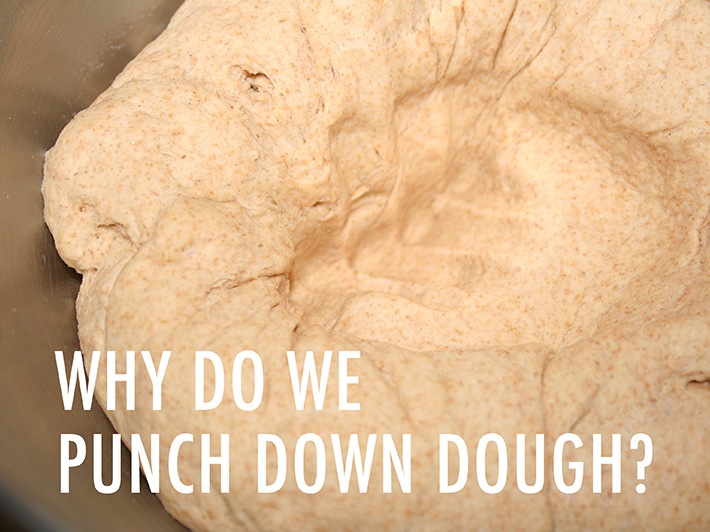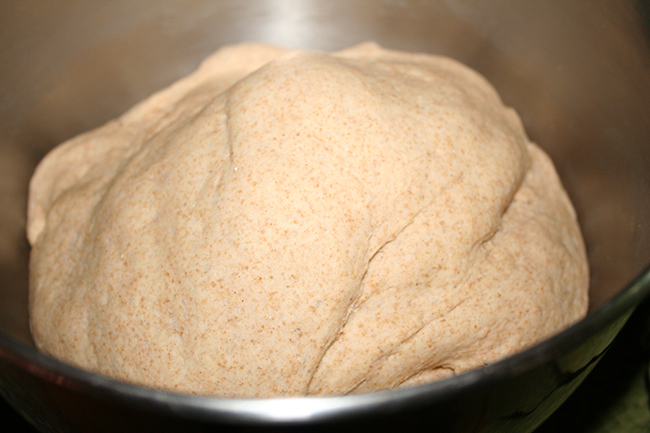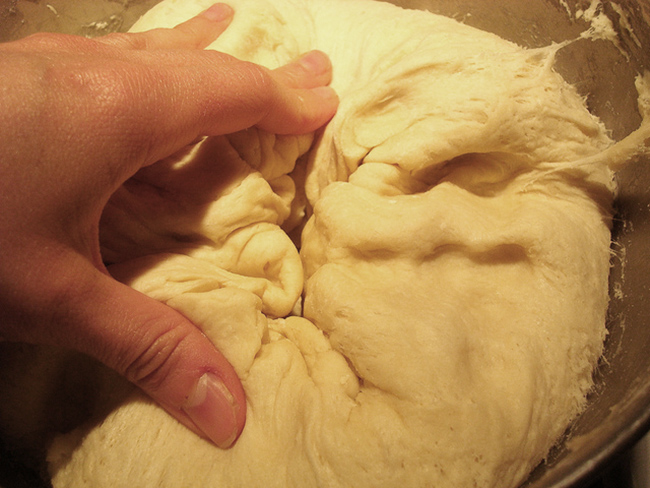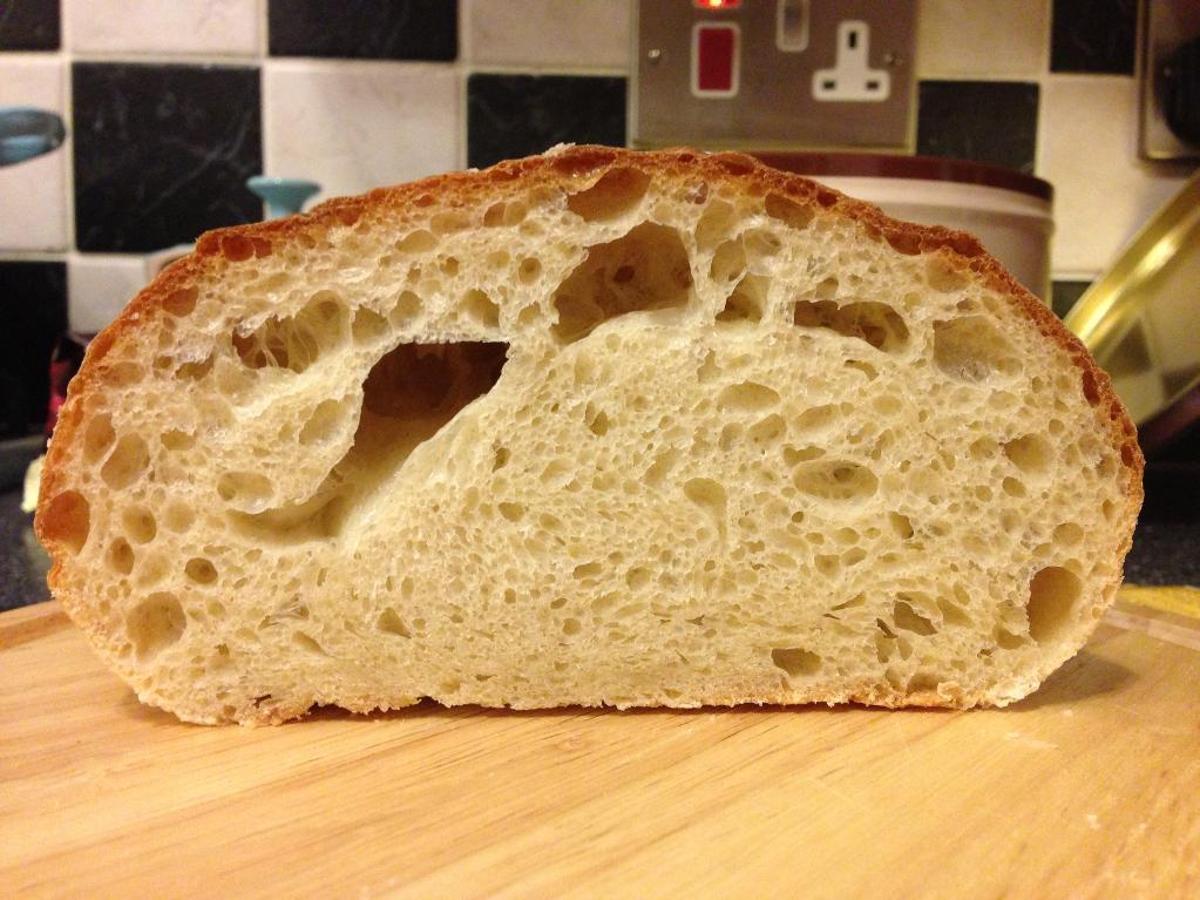If you’ve ever made bread, chances are you’ve come across a decidedly violent request to “punch down dough” in the recipe. As a compassionate baker, you may find yourself wondering what benefits are truly offered by this step. After all, you’ve already kneaded the poor dough; is it really necessary to keep beating it up?

Photos via CakeSpy unless otherwise noted
In spite of the aggressive-sounding action requested, punching down doesn’t mean that you need to deliver a knockout blow to your dough. Really, it’s more of a gentle deflation, delivered with a non-agressive fist. But why on earth do we take this step when making bread? Is it really important, and does it actually have an impact on the finished product? Let’s explore.

When should you punch down dough?
The chronology of a bread recipe typically goes like so: mix the ingredients, allow for an initial rising period (sometimes called a “bulk ferment”), then punch or deflate the dough before shaping, proofing, and finally, baking. Of course, depending on the recipe, there may be some variations, but this is a pretty standard timeline for making bread.
Also, it bears noting that while bread recipes often do say the words “punch down the dough,” sometimes they alternately indicate to “deflate the dough”. It really amounts to the same thing.

How does punching down dough work?
To understand the art of punching, it’s helpful to have a basic understanding of some of the other steps involved in the bread making process.
Usually, you’ll begin making bread by mixing all of the ingredients and letting them “bulk ferment,” meaning the entire “bulk” of the dough ferments as one unit at this time. This is when the yeast does most of its work, imparting flavor and structure while the the gluten network is inflated.
A bulk fermentation period can range from one hour to several hours. It depends on various factors, such as the temperature and humidity of your kitchen. Often, visual cues will accompany the time specified in the recipe to help circumvent confusion.
Usually, following this period, the dough puffs up significantly larger than the original size. Now is the time when you’ll punch the dough.
To “punch” the dough, what you actually do is make a fist and gently but assertively make an indent in the dough, leaving a nifty little fist-print as if you were making a plaster relief. Then, gather the edges around your fist mark and wrap them into the center (sort of like you would when making dough balls). Gently remove the dough and pat it; if it’s very bubbly-looking, you can give it another knead or two to knock out any straggling air bubbles.
This “punching” helps remove some of the bubbles of gas that have formed thanks to the yeast during the rising period. Gently deflating them gives the bread a finer texture. It also redistributes the cells of yeast and moisture so that they can ferment and rise during the next rising period.
After you punch your dough, some recipes will call for letting the dough sit briefly before shaping. After shaping, many recipes call for a “proofing” period, where the bread will be allowed one final rising period in its finished shape before baking.

Bread via ibecks
Does punching make a difference?
While punching the dough is a small step in the bread making process, it can offer great benefits for the finished texture and evenness of the bread, helping you avoid large pockets or air bubbles in the loaf. So do be sure to take the time to deliver a knuckle sandwich to your dough before enjoying a sandwich on your finished bread!

Share tips, start a discussion or ask one of our experts or other students a question.
No Responses to “Why Do We Punch Bread Dough?”